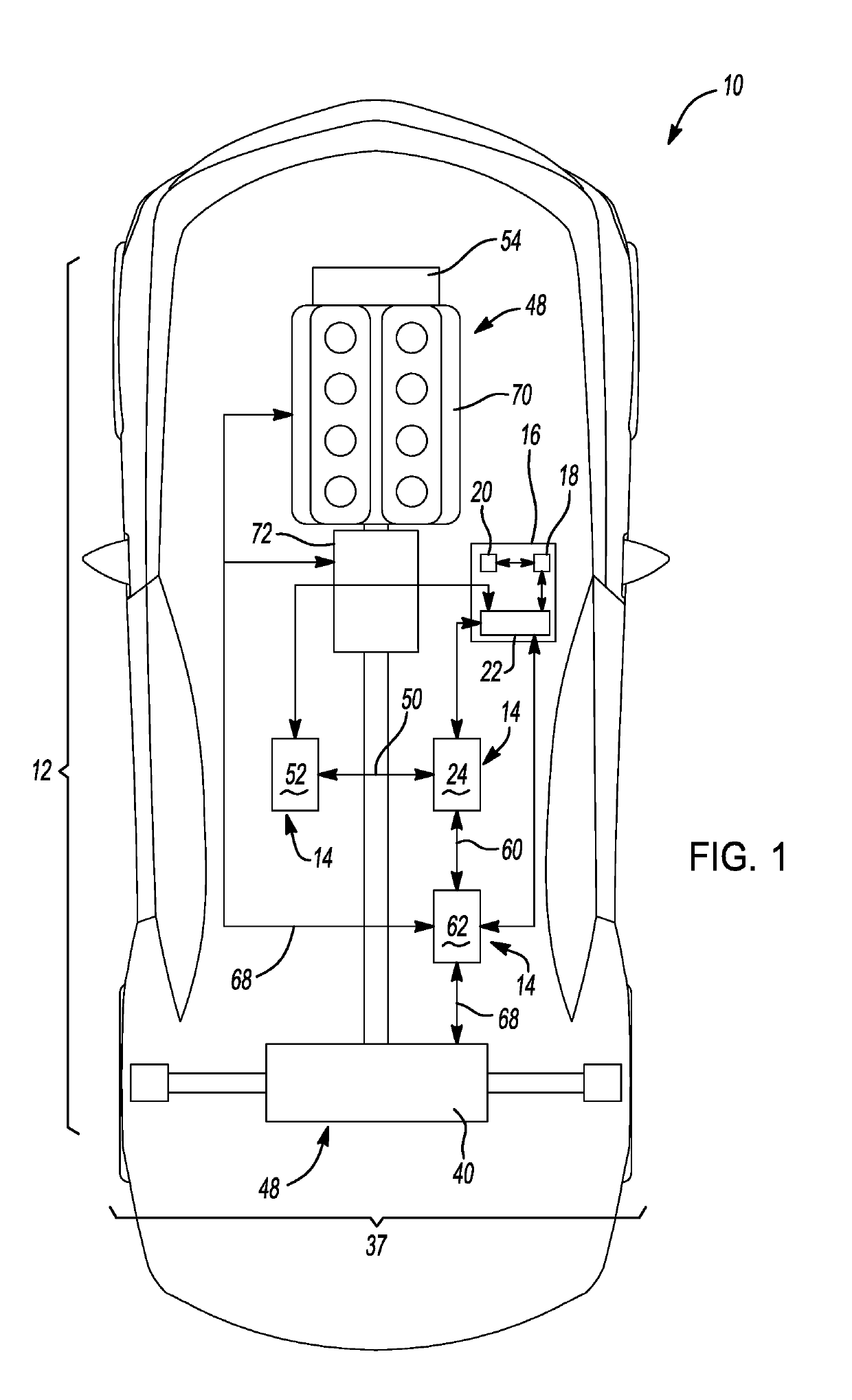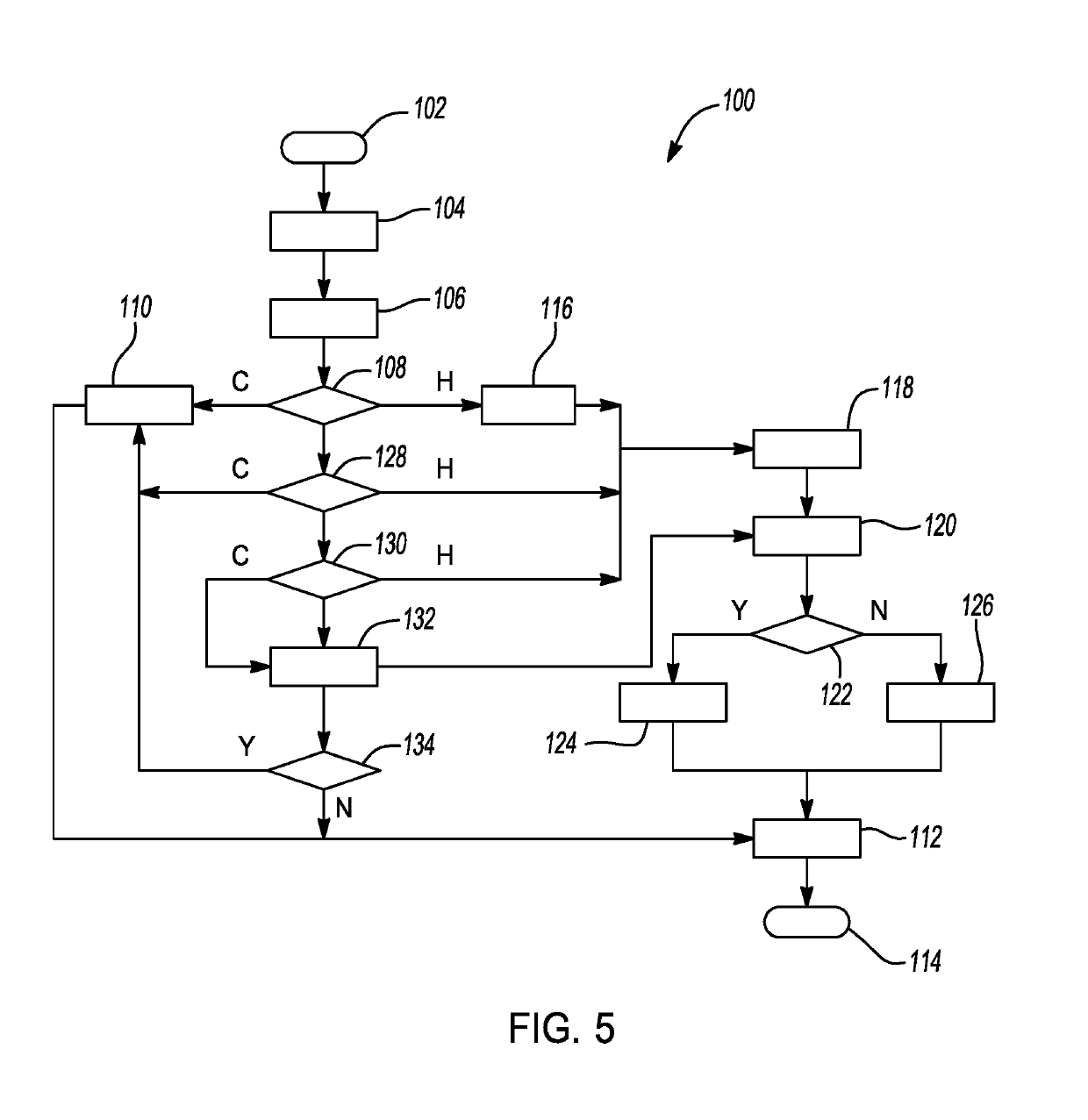Vehicle thermal systems low to high quality energy management, storage, recovery, and optimization
a technology for energy management and vehicles, applied in the direction of secondary cell servicing/maintenance, battery/fuel cell control arrangement, electrochemical generators, etc., can solve the problems of relative complex series of circuits, thermal energy is generated in large quantities, and thermal energy surplus is generated, so as to prevent condenser icing
- Summary
- Abstract
- Description
- Claims
- Application Information
AI Technical Summary
Benefits of technology
Problems solved by technology
Method used
Image
Examples
Embodiment Construction
[0033]The following description is merely exemplary in nature and is not intended to limit the present disclosure, application, or uses.
[0034]Referring to FIG. 1, a motor vehicle is shown and indicated generally by reference number 10. While the motor vehicle 10 is depicted as a car, it should be understood that the motor vehicle 10 may be a car, a truck, an SUV, a van, a semi, a tractor, a bus, a go-kart, or any other such motor vehicle 10 without departing from the scope or intent of the present disclosure. The motor vehicle 10 is equipped with a thermal management system 12. In broad terms, the thermal management system 12 operates to selectively transport thermal energy from a heat source within the thermal management system 12 to a heat sink in the thermal management system 12, or from a heat source or a heat sink to a location within the thermal management system 12 where the thermal energy is needed. The thermal management system 12 includes a plurality of dissimilar thermal ...
PUM
 Login to View More
Login to View More Abstract
Description
Claims
Application Information
 Login to View More
Login to View More - R&D
- Intellectual Property
- Life Sciences
- Materials
- Tech Scout
- Unparalleled Data Quality
- Higher Quality Content
- 60% Fewer Hallucinations
Browse by: Latest US Patents, China's latest patents, Technical Efficacy Thesaurus, Application Domain, Technology Topic, Popular Technical Reports.
© 2025 PatSnap. All rights reserved.Legal|Privacy policy|Modern Slavery Act Transparency Statement|Sitemap|About US| Contact US: help@patsnap.com



